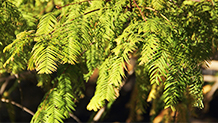| 作 者:Wen J, Yi M, Dong LM, Zhang L, Liu S, Yuan S, Tao XX, Lai M |
| 影响因子:3 |
| 刊物名称:Journal of Forestry Research |
| 出版年份:2023-05-20 |
| 卷:6 期: 页码:1951-1962 |
论文摘要:
A solid understanding of the efciency of early selection for fber dimensions is a prerequisite for breeding slash pine (Pinus elliottii Engelm.) with improved prop_x0002_erties for pulppaper products. Genetic correlations between size of fbers, wood qualitygrowth properties are also important. To accomplish efective early selection for size of fbersevaluate the impact for wood quality traitsring widths, core samples were collected from 360 trees of 20 open-pollinated Pinus elliottii families from three genetic trials. Cores were measured by SilviScan,the age trends for phenotypic values, heritability, early-late genetic correlations,early selection efciency for fber dimensions, such as tangentialradial fber widths, fber wall thicknessfber coarseness,their correlations with microfbril angle (MFA), modulus of elasticity (MOE), wood densityring width were investigated. Diferent phenotypic trends were found for tangentialradial fber widths while fber coarsenesswall thickness curves were similar. Age trends of heritability based on area-weighted fber dimensions were diferent. Low to moderate heritability from pith to bark (~ 0.5) was found for all fber dimension across the three sites except for tangential fber widthwall thickness at the Ganzhou site. Early-late genetic correlations were 0.9 after age of 9 years,early selection for fber dimensions could be efective due to strong genetic correlations. Our results showed moderate to strong positive genetic correlations for modulus of elasticitydensity with fber dimensions. The efects on fber dimensions were weakmoderate when ring widthwood quality traits were selected alone. Estimates of efciency for early selection indicated that the optimal age for radial fber widthfber coarseness was 6–7 years, while for tangential fber widthwall thickness was 9–10 years.
DOI:https://doi.org/10.1007/s11676-023-01622-5










